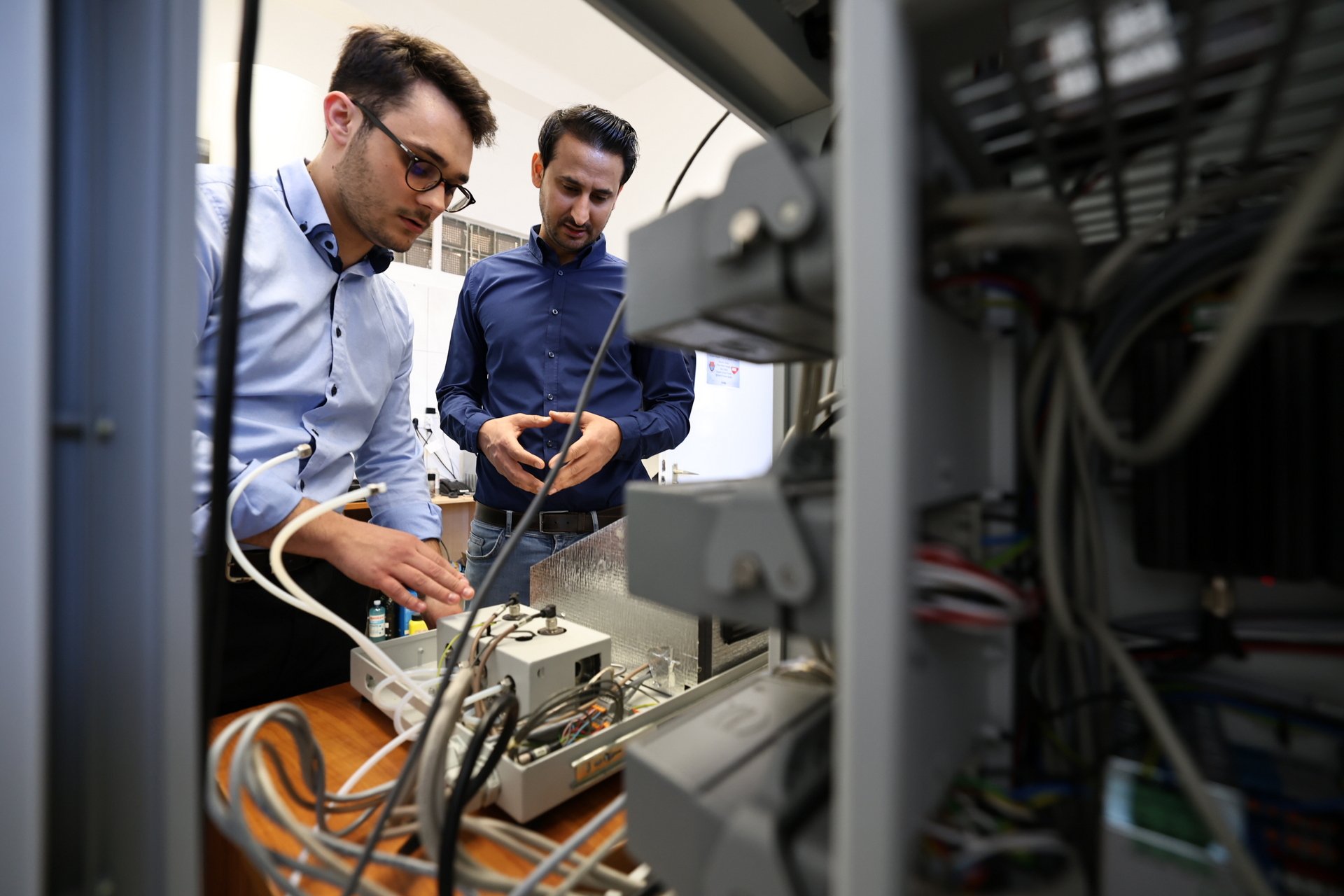
Researchers at the University of Szeged are taking photoacoustic instrument development to the next level by incorporating metamaterials to enhance system sensitivity. Supported by the HU-RIZONT program, the project brings together prestigious partner institutions, including the University of Glasgow, the National University of Singapore, and Seoul National University. The photoacoustic device under development has a wide range of promising applications: in healthcare, for instance, it could allow doctors to estimate blood loss by analyzing the composition of exhaled breath, while in disaster situations such as earthquakes, the technology could help detect survivors trapped under rubble or identify the presence of gas leaks.
“Photoacoustic research and system development at the University of Szeged began in 1994,” says Professor Zoltán Bozóki. “Thanks to three decades of research and development, the photoacoustic systems created in Szeged have become competitive alternatives to traditional analytical measurement methods in a wide variety of fields.” According to the professor, who is a researcher at the University of Szeged’s Center of Excellence for Interdisciplinary Research, Development, and Innovation, this technology is contributing to improvements in quality of life in several key areas, including environmental protection, medical diagnostics, and industrial process control.
Detecting sound generated by light absorption
How does a photoacoustic measurement system work? – we asked Professor Bozóki. He explained that the process starts by tuning a laser to a wavelength that is absorbed by the component being measured. For example, to detect water vapor, researchers select a wavelength where water molecules absorb the laser light. The laser beam is then modulated at a frequency in the kilohertz range – within the range of human hearing. When the target molecules absorb the light, this energy is converted into sound waves. The louder the sound, the higher the concentration of the measured component. These sounds are usually far below the threshold of human hearing, so sensitive microphones and advanced signal processing electronics are needed to detect them. Over the years, the system’s electronics, acoustic design, and microphone technology have been continuously refined. Today, the technology has reached a level of sophistication where further development is only possible by exploring entirely new technological directions.
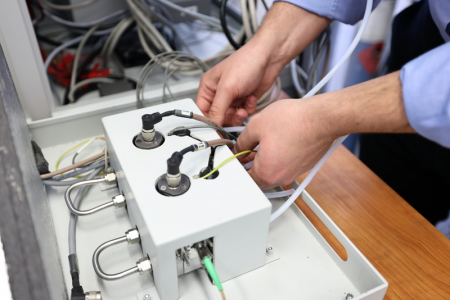 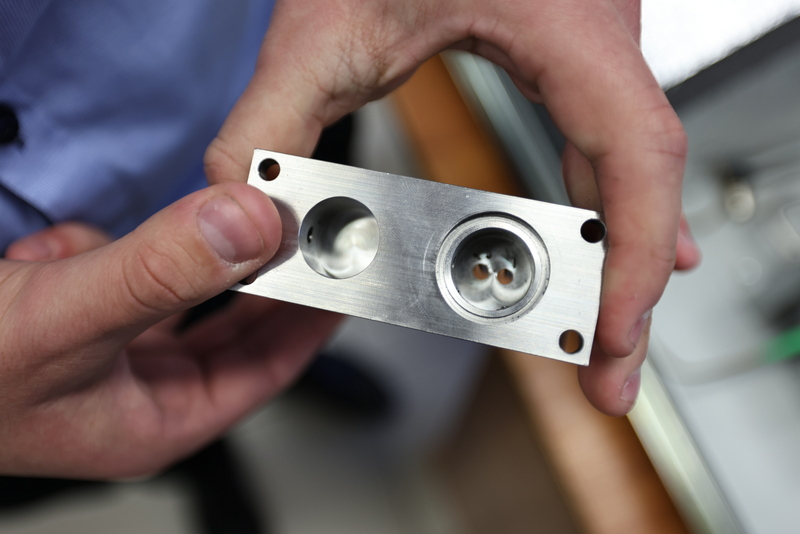 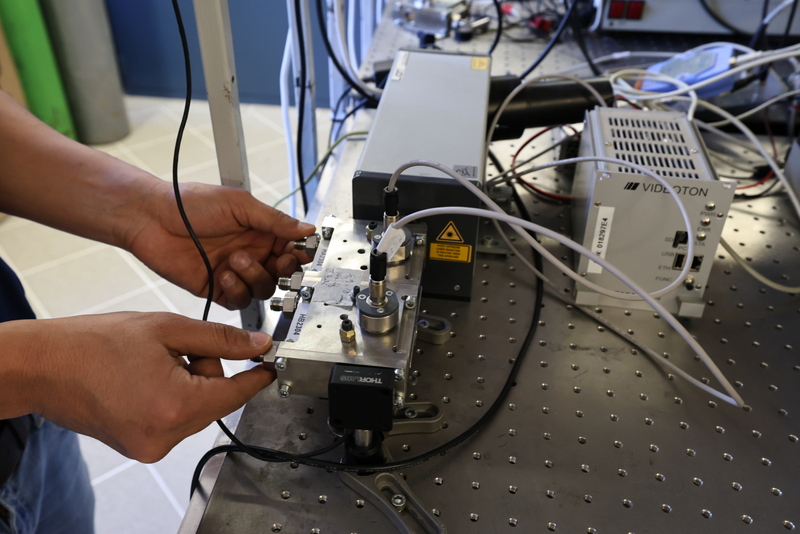 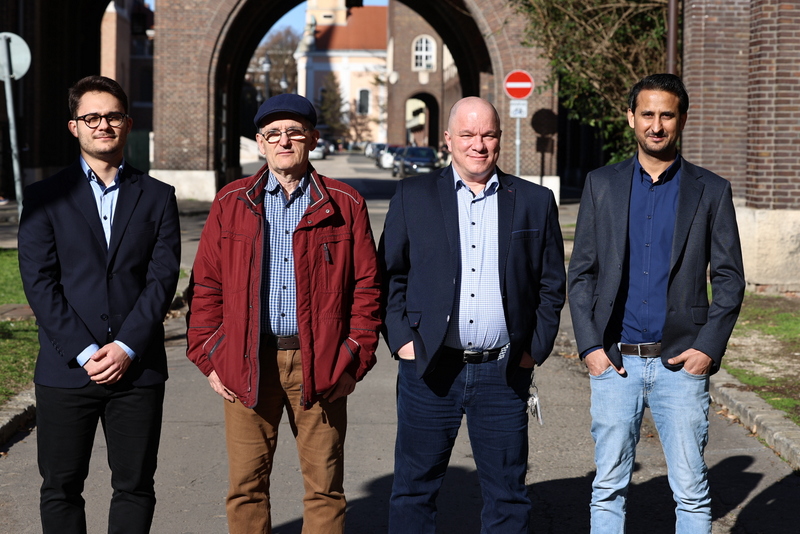 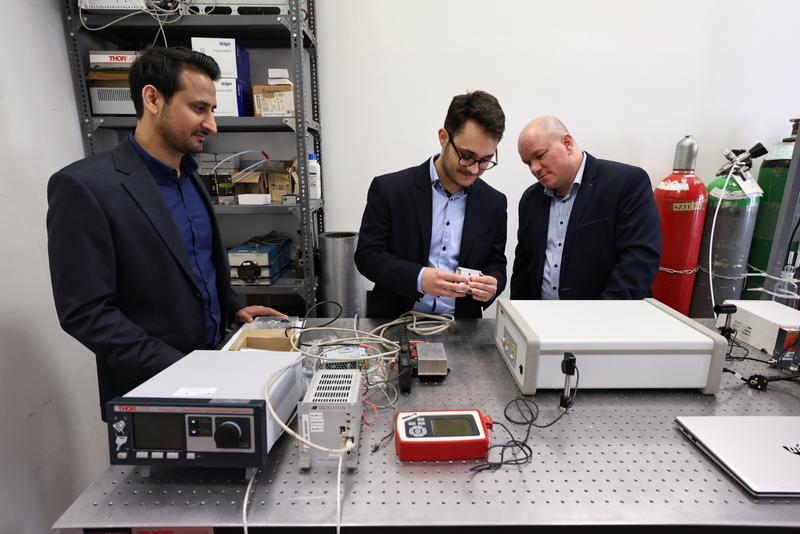 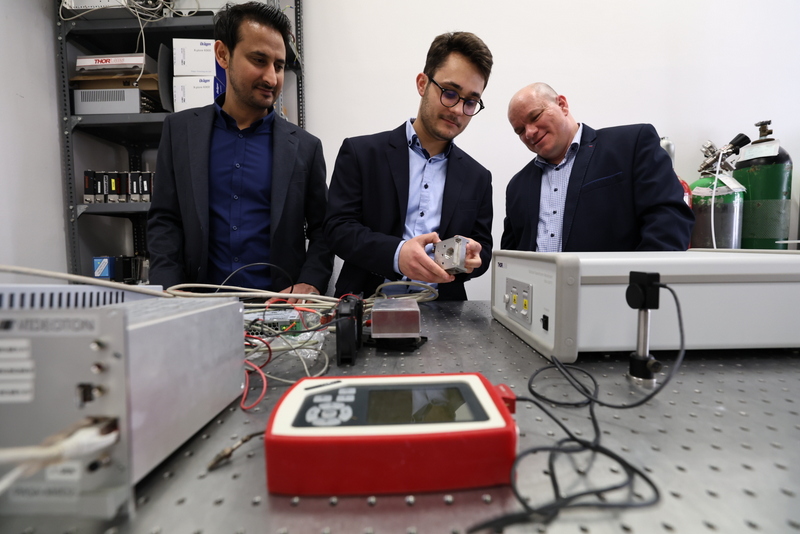 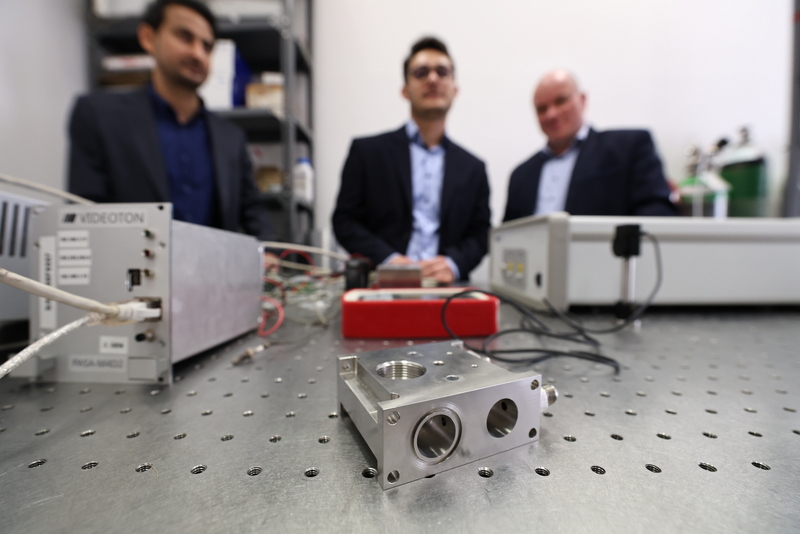 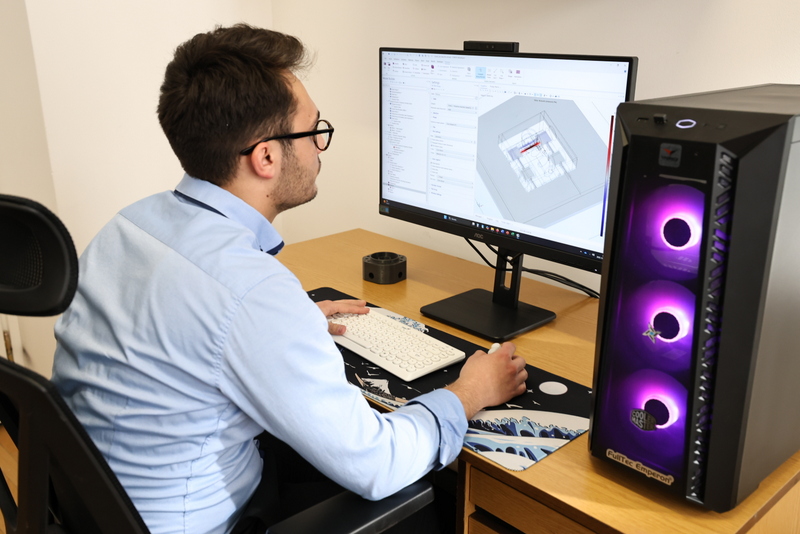 |
| A New Chapter for Photoacoustic Research in Szeged Photo gallery by Anna Bobkó |
Transforming photoacoustic instruments with metamaterials
“In recent years, a great number of articles have been published about metamaterials. Forecasts suggest they will revolutionize a wide range of fields – for example, they could dramatically reduce turbine noise in aviation,” explains Professor Bozóki. “This made us wonder whether metamaterials could also be applied in photoacoustics to achieve similar breakthroughs – and that’s what we set out to explore.”
We learned from Professor Bozóki that metamaterials are artificially engineered substances that do not occur in nature. Their unique properties depend less on their chemical composition and more on their internal structure. Metamaterials can be made from familiar materials such as metals or semiconductors, but their unusual internal structure gives them physical properties that natural materials do not have. Thanks to their microscopic scale, metamaterials can produce effects that would otherwise require components several orders of magnitude larger if made from natural materials. One of these properties – particularly important for photoacoustic applications – is sound attenuation. Using traditional methods, achieving the same level of noise reduction would require components several tens of centimeters in size, while metamaterials can accomplish this at the millimeter scale. As a result, the photoacoustic chambers developed by researchers at the University of Szeged could be reduced to the size of a smartphone. The goal is that by the end of the project, these metamaterial-enhanced photoacoustic systems will be able to perform measurements at least three times more accurate than current models – and in certain cases, even improve accuracy by several orders of magnitude.
Dr. Abdul Rahman, a postdoctoral researcher at the University of Szeged, says that renowned international partner institutions are supporting the university’s experts in the production of metamaterials. As part of the project, the National University of Singapore and the University of Glasgow are responsible for developing optical metamaterials, while at Seoul National University, researchers are designing acoustic metamaterials – a process that already involves both production and measurement work.
Modeling for greater accuracy
Dr. Miklós Füle, Head of the Department of Experimental Physics at the University of Szeged, says that designing metamaterials and using computer simulations to predict and map their properties is the task of Áron Csókási, a final-year master’s student in physics. His models allow researchers to identify new types of acoustic or optical phenomena. Both the simulation of ideas and the modeling and evaluation of results are carried out using computer tools. Once this process is complete, the individual components of the photoacoustic system – incorporating acoustic and optical metamaterials – are developed and implemented.
From air quality to agriculture: Real-world applications of photoacoustic technology
The photoacoustic measurement system has a wide range of potential applications. It can be used to monitor air quality, detect specific components in natural gas, biogas, and other gases, and measure their concentration.
The device can also be applied in medical diagnostics. Most recently, it was tested at the ELI (Extreme Light Infrastructure) facility during a volunteer blood donation event. By analyzing the composition of exhaled breath, the system can provide an estimate of blood loss.
It can even be used to measure the atmosphere’s ability to form contrails. If an aircraft is flying through dry air, the contrail quickly dissipates. In contrast, in humid air, the contrail lingers. The condensed water that forms in this way can remain in the atmosphere for days, trapping sunlight and contributing to climate-modifying effects.
Using the measurement systems developed by the research group, it is also possible to determine what percentage of fertilizer applied to agricultural land is actually absorbed by the soil. This is done by detecting both the presence and concentration of ammonia released during the process. The concentration of the target gas components can be precisely measured just a few meters above the ground – including with instruments mounted on drones.
One of the group’s latest research directions focuses on developing a sensor unit capable of detecting the presence of survivors or gas leaks beneath rubble after an earthquake – without putting researchers or rescue animals at risk.
With the combined expertise of researchers from the University of Szeged’s Department of Optics and Quantum Electronics, the HUN-REN–SZTE Research Group for Photoacoustic Monitoring of Environmental Processes, and the Department of Experimental Physics, the interdisciplinary project is breaking new ground in photoacoustic technology.
Original article and photos by Anna Bobkó

